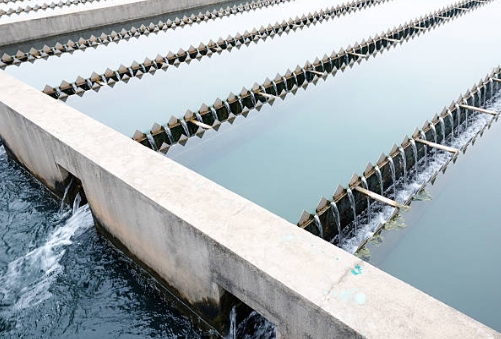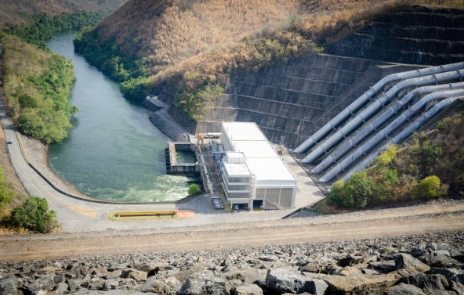Please Choose Your Language
Views: 222 Author: Carie Publish Time: 2025-04-02 Origin: Site








Content Menu
● How Sewage Water Travels to Treatment Plants
>> Gravity Flow and Pumping Stations
>> Maintenance of Sewer Networks
● Emerging Technologies in Wastewater Treatment
● FAQ
>> 1. What happens if sewage systems overflow?
>> 2. How do microorganisms help in sewage treatment?
>> 3. What is the purpose of tertiary treatment?
>> 4. Can treated sewage water be reused?
>> 5. How is biogas produced during sludge digestion?
● Citation
Sewage water treatment is a vital process that ensures wastewater is safely disposed of or reused, protecting both public health and the environment. This article delves into the journey of sewage water from its source to treatment plants, the intricate processes it undergoes, and the technologies used to convert contaminated water into clean effluent. By understanding these mechanisms, we can appreciate the importance of wastewater management in modern society.

Sewage water begins its journey through an extensive network of pipes and sewers designed to transport wastewater from homes, businesses, and industries to treatment facilities. These systems are categorized into:
- Separate Sewer Systems: These systems handle only wastewater from buildings, excluding stormwater.
- Combined Sewer Systems: Common in older cities, these systems transport both wastewater and stormwater runoff[2][5].
The infrastructure supporting these systems is vast; for example, Germany's sewage system spans approximately 515,000 kilometers—enough to circle the planet 13 times[1].
In many urban areas, gravity is utilized to move sewage through pipes. However, in regions where elevation changes hinder flow, pumping stations are employed. These stations lift and propel wastewater toward treatment plants, ensuring continuous transportation[3][4].
Regular maintenance is crucial to prevent blockages and ensure efficient transportation. Techniques such as high-pressure jetting and CCTV inspections help monitor and clean pipes, keeping the system functional[8].
The first stage focuses on removing large solids and floating materials through physical processes:
1. Screening: Metal screens block bulky objects like wood, rags, or plastic that could clog equipment[4].
2. Sedimentation Tanks: Heavier solids settle at the bottom while lighter materials are skimmed off the surface[1][4].
This stage removes approximately 30% of pollutants from raw sewage[1].
Secondary treatment involves biological processes that break down organic matter:
- Aeration Tanks: Air is added to foster microorganisms that consume organic pollutants[2].
- Secondary Sedimentation: Activated sludge settles out, leaving treated water ready for further processing[4].
This stage significantly reduces organic matter and biological oxygen demand (BOD)[5].
Advanced processes are employed to remove nutrients like nitrogen and phosphorus:
- Chemical Precipitation: Chemicals react with nutrients to form insoluble compounds[1].
- Filtration and Disinfection: Final polishing steps include sand filters and chlorine or UV light disinfection[3][5].
Tertiary treatment ensures that treated water meets stringent environmental standards before discharge or reuse.

The by-product of sewage treatment is sludge, which undergoes further processing:
1. Thickening: Sludge volume is reduced by removing excess water.
2. Digestion: Anaerobic bacteria break down organic matter, producing biogas (methane) as a renewable energy source[1][4].
3. Drying Beds: Sludge is dewatered for safe disposal or reuse as fertilizer[1][5].
In large plants, sludge digestion can produce significant quantities of biogas used for heating or electricity generation[1].
Membrane bioreactors (MBRs) combine biological treatment with advanced filtration technologies. They use synthetic membranes to separate microorganisms from treated water, achieving higher purity levels than conventional methods[5].
Some advanced facilities incorporate quaternary treatment stages to remove micropollutants such as pharmaceuticals. This process has been implemented in countries like Sweden to address environmental concerns related to persistent pollutants[5][6].
Constructed wetlands mimic natural ecosystems to treat wastewater. These systems use plants and microorganisms to remove contaminants effectively while providing habitat for wildlife[5][6].
Sewage water treatment is a complex yet essential process that involves transporting wastewater through sewer networks and subjecting it to multiple purification stages. From primary sedimentation to advanced quaternary treatments, each step plays a critical role in ensuring safe disposal or reuse of treated effluent. By investing in innovative technologies and maintaining robust infrastructure, communities can safeguard public health and preserve environmental integrity.

Overflow occurs during heavy rainfall in combined sewer systems. Excess water may bypass treatment plants and discharge directly into waterways, potentially causing pollution[5].
Microorganisms break down organic matter during secondary treatment, converting it into simpler compounds that can be easily removed[2][4].
Tertiary treatment removes nutrients like nitrogen and phosphorus that can cause eutrophication in natural water bodies[1][3].
Yes, treated wastewater can be reused for irrigation, industrial processes, or even potable purposes after advanced treatment stages[3][5].
Anaerobic bacteria digest organic matter in sludge, releasing methane-rich biogas that can be used as a renewable energy source[1][4].
[1] https://www.bmuv.de/en/topics/water-management/overview-water-management/wastewater/sewage-treatment-plant
[2] https://www.nyc.gov/site/dep/water/wastewater-treatment-process.page
[3] https://en.wikipedia.org/wiki/Wastewater_treatment
[4] https://www.britannica.com/technology/wastewater-treatment/Primary-treatment
[5] https://en.wikipedia.org/wiki/Sewage_treatment
[6] https://www.fao.org/4/t0551e/t0551e05.htm
[7] https://www.britannica.com/technology/wastewater-treatment
[8] https://www.water.org.uk/waste-water/sewage-treatment-works
This article highlights the top stannous sulfate manufacturers and suppliers in the UK, focusing on their product quality, industrial applications, and market presence. It emphasizes the UK's strength in producing high-purity stannous sulfate for surface treatment, water treatment, and electroplating industries. Key players like REAXIS and Atotech lead the market with innovative solutions, while OEM support and regulatory compliance remain core advantages of UK suppliers. The article also addresses the compound's uses and includes a detailed FAQ to assist industry professionals.
Germany leads Europe in Stannous Sulfate manufacturing, supplying high-purity, reliable chemicals essential for electroplating, glass production, pharmaceuticals, and more. Key German suppliers like TIB Chemicals AG, MCC Menssing, Univar Solutions GmbH, and VMP Chemiekontor GmbH offer tailored solutions, strict quality control, and global distribution for diverse industrial demands.
This article explores the top stannous sulfate manufacturers and suppliers in Europe, highlighting leading companies like TIB Chemicals and Chimica Panzeri. It details production technologies, quality standards, industry applications, and OEM services, offering insights for markets requiring high-purity stannous sulfate chemicals.
This article explores the top stannous sulfate manufacturers and suppliers in France, highlighting their product quality, compliance with environmental standards, customized OEM services, and key industrial applications such as aluminum surface treatment, electronics, pharmaceuticals, and wastewater management.
This article explores the top stannous sulfate manufacturers and suppliers in America, detailing key companies, product forms, industries served, manufacturing processes, quality controls, and environmental considerations. It highlights the benefits of sourcing stannous sulfate locally with customization and technical support options. Insightful images illustrate stannous sulfate forms, production, and applications in industrial processes. Finally, a FAQ section addresses common queries related to stannous sulfate use and supply.
This comprehensive report explores Japan's top nickel sulfate manufacturers and suppliers, highlighting their production capabilities, market positions, and product applications. Featuring companies like Sumitomo Metal Mining and SEIDO Chemical Industry, the article delves into manufacturing processes, industry uses, and environmental practices, reflecting the pivotal role of Japanese firms in the advancing global nickel sulfate market.
South Korea is a leading global hub for nickel sulfate manufacturing, dominated by Korea Zinc and KEMCO with a combined annual capacity of 80,000 tons. Leveraging advanced smelting technologies and government-supported strategic status, these manufacturers supply high-quality nickel sulfate for electric vehicle batteries, surface treatment, and chemical industries. South Korean suppliers offer comprehensive OEM services to international clients, meeting growing global demand with innovation, sustainability, and quality.
This article provides a comprehensive overview of leading nickel sulfate manufacturers and suppliers in Portugal, covering their technological capabilities, product lines, market roles, and strict compliance with international standards. Highlighting diverse applications from electroplating to battery manufacturing, it showcases Portugal’s growing importance in the global nickel sulfate supply chain. Accompanied by relevant images, the article emphasizes sustainability, innovation, and quality as cornerstones of the Portuguese chemical sector.
This article explores the top nickel sulfate manufacturers and suppliers in Spain, highlighting their product offerings, quality standards, and strategic advantages. It covers Spanish industry applications, OEM services, and explains why Spain is a preferred sourcing hub for global chemical buyers. The article also includes detailed FAQs and relevant images to provide a comprehensive understanding of the nickel sulfate market in Spain.
Italy’s nickel sulfate manufacturing and supply chain is advanced, diverse, and globally integrated—supporting key industries like batteries, electroplating, and catalysts. With leading companies, customized services, and sustainable practices, Italian nickel sulfate manufacturers and suppliers are crucial to meeting the world’s growing demand for this essential chemical.
This article provides an in-depth overview of the top nickel sulfate manufacturers and suppliers in Russia, focusing on major companies like Norilsk Nickel, their production processes, market presence, environmental initiatives, and the diverse industrial applications of nickel sulfate. It serves as a valuable resource for international businesses looking to source high-quality nickel sulfate from Russia.
Aluminum alloys have become indispensable materials in modern industry, owing to their light weight, high strength-to-weight ratio, corrosion resistance, workability, and versatility. However, their durability—especially when used in challenging environments—is critically dependent on
Electrophoretic coatings, often referred to as *E-coatings* or *electrophoretic deposition (EPD)*, have revolutionized surface finishing in the modern manufacturing landscape. They blend chemistry, material science, and advanced technology to create coatings that are durable, uniform, and environmen
Discover Europe's most prominent Nickel Sulfate Manufacturers and Suppliers, including sustainability-focused innovators and rapid-response distributors serving the EV, electroplating, and advanced materials sectors. Learn about top companies, key trends, market drivers, and FAQs to inform your industrial chemical sourcing decisions. This comprehensive guide highlights the critical role nickel sulfate plays in Europe’s green industrial future.
This article details France’s leading role in nickel sulfate production, covering major manufacturers and suppliers, innovative production methods, sustainability commitments, and the industry’s critical role in green technology supply chains. It also examines market drivers, regulatory compliance, and supply chain strategies while answering common industry questions. The content is especially relevant for businesses seeking OEM solutions for aluminum profile treatment and battery production.
This comprehensive guide details the leading Nickel Sulfate Manufacturers and Suppliers in Germany, highlighting their strengths, product applications, and why Germany is a global leader. It covers selection criteria, market trends, and answers to key FAQs for buyers and industry professionals.
This article offers a comprehensive guide to the UK’s top Nickel Sulfate Manufacturers and Suppliers, highlighting industry applications, leading brands, and sourcing strategies in the rapidly growing British and global markets. From surface finishing to electric vehicle batteries, discover how to select the right partner and stay ahead of industry shifts.
This article explores the top Nickel Sulfate Manufacturers and Suppliers in America, highlighting their key products, application areas, and essentials of reliable sourcing. With detailed industry profiles, market trends, future outlooks, and FAQs, it serves as a vital comprehensive resource for businesses seeking high-quality nickel sulfate and dependable partnership.
Choosing the best chemical raw materials for aluminum profiles is **critical to ensuring strength, durability, corrosion resistance, and sustainability** in the final products. The selection impacts not only the mechanical and aesthetic qualities but also influences cost-effectiveness, production ef
In the global industrial landscape, **chemical raw materials for surface treatment** play a critically transformative role in enhancing the durability, functionality, and aesthetics of countless products. Surface treatment chemicals help prevent corrosion, improve adhesion, increase wear resistance,
